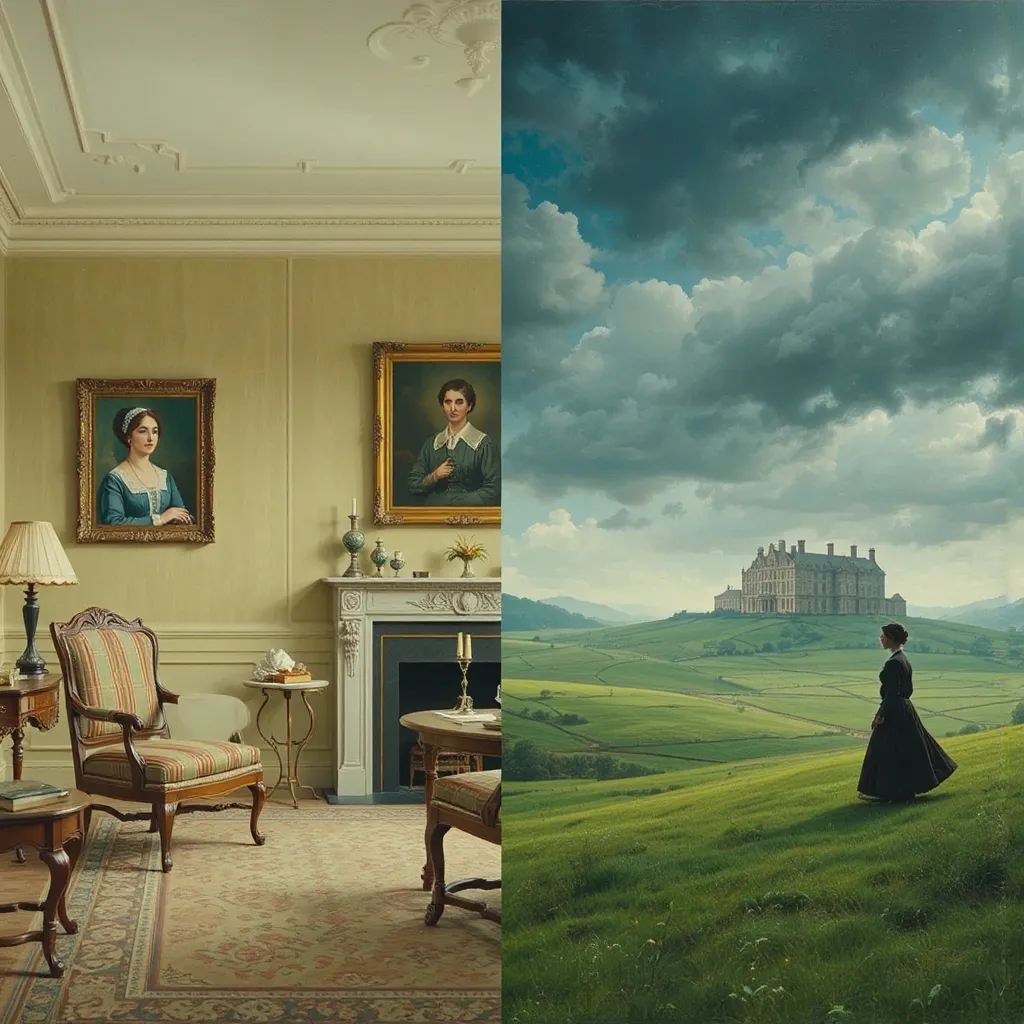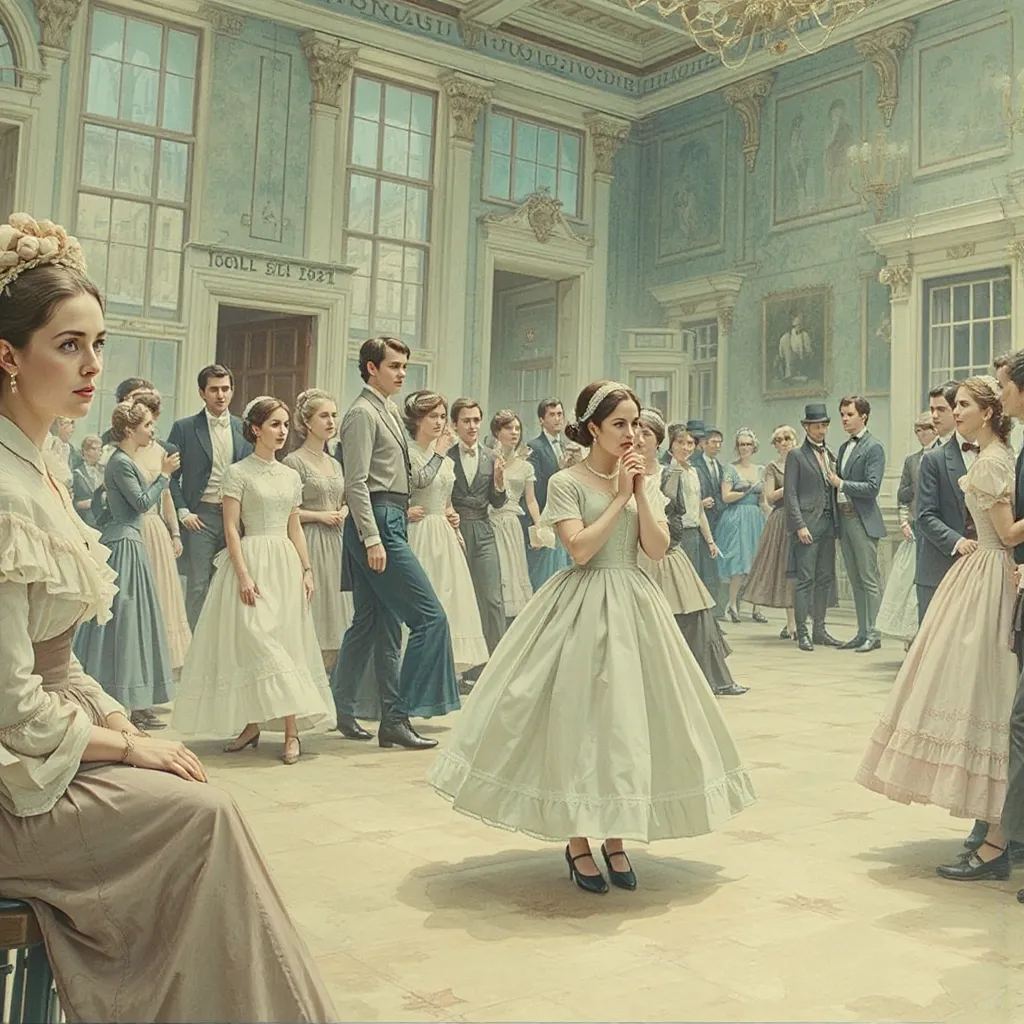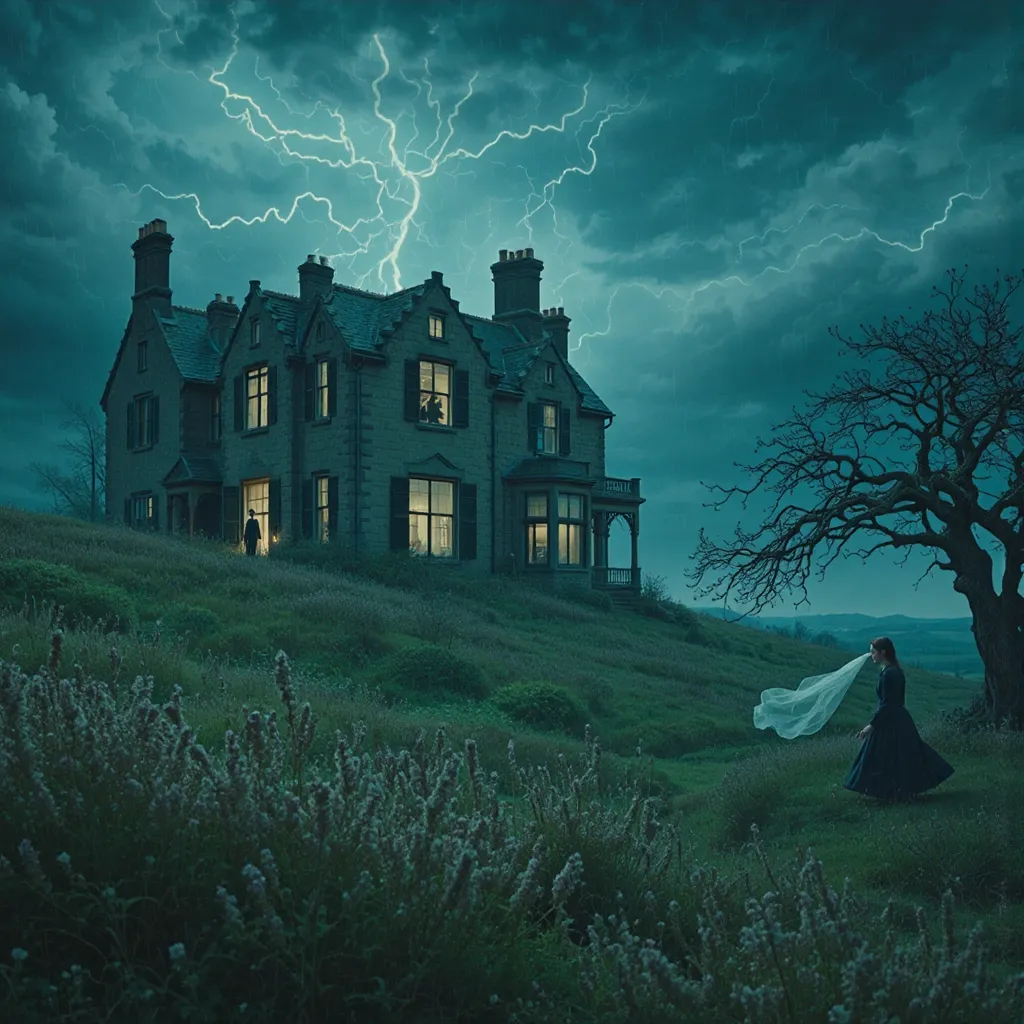Compare and contrast Jane Austen’s “Pride and Prejudice” with Emily Brontë’s Wuthering Heights.
A Tale of Two Literary Worlds: Comparing Jane Austen’s “Pride and Prejudice” and Emily Brontë’s “Wuthering Heights”

In the grand tapestry of English literature, few authors have captured the hearts and minds of readers quite like Jane Austen and Emily Brontë. Though they lived in the same century, their literary worlds could not be more distinct. Austen’s meticulous portraits of domestic realism contrast sharply with Brontë’s wild, tempestuous romanticism, offering readers two different yet equally compelling visions of life, love, and society in 19th century England.
This article shall endeavor to compare and contrast these two monumental works: Austen’s “Pride and Prejudice” (1813) and Brontë’s “Wuthering Heights” (1847). Through an examination of their themes, characters, writing styles, and historical contexts, we shall uncover the unique brilliance of each novel and understand why, despite their differences, both works have endured as masterpieces of English literature.
Historical Context and Publication
Jane Austen wrote “Pride and Prejudice” during the Regency era (1811-1820), a time of relative social stability for the English gentry and aristocracy. The novel was published in 1813, initially anonymously as “By a Lady.” It was Austen’s second published novel and quickly gained popularity among readers of the time.(SparkNotes)
“Wuthering Heights,” meanwhile, was published in 1847 under the pseudonym Ellis Bell. Emily Brontë, like her sisters Charlotte and Anne, adopted a masculine nom de plume to avoid the prejudice faced by female authors of the time. The novel emerged during the Victorian era, a period marked by rapid industrialization, social change, and shifting class dynamics. Notably, “Wuthering Heights” was Emily Brontë’s only published novel, as she died the year after its publication at the young age of 30.(Wikipedia)
The historical settings in which these authors wrote significantly influenced their perspectives and themes. Austen’s world was one of country houses, social calls, and intricate social codes, while Brontë’s Yorkshire was more rural, isolated, and exposed to the harsher realities of nature and changing economic conditions.
Themes: Refinement versus Passion
Pride and Prejudice: Social Commentary and Personal Growth
“Pride and Prejudice” centers around themes of personal growth, marriage, social class, reputation, and of course, pride and prejudice themselves. Austen crafts a world where social propriety is paramount, especially for women whose reputations could be irreparably damaged by the slightest impropriety.(BBC Bitesize)

The novel’s title directly points to its central theme: how pride and prejudice can lead to misunderstandings and judgments. Elizabeth Bennet’s initial prejudice against Mr. Darcy stems from wounded pride after overhearing his dismissive comments about her at a ball. Similarly, Darcy’s pride in his social position blinds him to the impropriety of his first proposal. Through their journey, both characters grow and overcome these flaws, learning to see beyond first impressions and social expectations.
Austen is particularly concerned with marriage as both a social institution and a personal relationship. As she famously opens her novel: “It is a truth universally acknowledged, that a single man in possession of a good fortune, must be in want of a wife.” This ironic observation sets the stage for a nuanced exploration of marriage motivations in her society. Through various couples—Elizabeth and Darcy, Jane and Bingley, Charlotte and Mr. Collins, Lydia and Wickham—Austen presents different approaches to matrimony, from practical security to passionate love.
The theme of social class runs throughout, with Austen subtly critiquing the rigid class structure while acknowledging its power. Lady Catherine de Bourgh embodies aristocratic entitlement, while the Bennets occupy the precarious position of “landed gentry” whose estate is entailed away from the female line.
Wuthering Heights: Passion, Revenge, and Nature
“Wuthering Heights,” in contrast, is dominated by themes of passionate, destructive love, revenge, social class conflict, the supernatural, and the power of nature. The novel presents love not as the refined emotion of Austen’s world, but as a primal, almost supernatural force that transcends death and social boundaries.(SparkNotes)

The central relationship between Catherine Earnshaw and Heathcliff defies conventional romantic tropes. Their love is not gentle or civilizing but wild and destructive. As Catherine famously declares: “He’s more myself than I am. Whatever our souls are made of, his and mine are the same.” Their bond transcends conventional romance, representing a union of souls that cannot be contained within social structures.
Revenge drives much of the plot, as Heathcliff, rejected by Catherine and degraded by Hindley, embarks on a methodical campaign to destroy both the Earnshaws and the Lintons. His vengeance spans decades and impacts the next generation, demonstrating how unchecked hatred can reverberate through time.
Class conflict forms another crucial theme, with Heathcliff—described as a “gypsy” foundling—experiencing discrimination and eventually rising to power through mysterious means. The novel explores the tension between “civilization” (represented by Thrushcross Grange and the Lintons) and “nature” (embodied by Wuthering Heights and the Earnshaws).
The supernatural permeates the novel, from Catherine’s ghost to the symbolic presence of the wild moors. Nature itself becomes a character, with the harsh, windswept landscape of the Yorkshire moors reflecting the untamed emotions of the protagonists.(CliffsNotes)
Characters: Rationality versus Intensity
Pride and Prejudice: Realistic Social Portraits
Austen’s characters are drawn with psychological depth and realism, functioning within a recognizable social world. Elizabeth Bennet, the novel’s protagonist, embodies wit, intelligence, and moral growth. Her journey from prejudice to understanding forms the emotional core of the story.(LitCharts)
Mr. Darcy provides Elizabeth’s counterpart—initially proud and aloof, gradually revealed to be principled and capable of growth. Their relationship develops through conversation and intellectual engagement rather than pure passion.
The supporting cast is equally well-drawn, from the ridiculous Mr. Collins to the pragmatic Charlotte Lucas, the gentle Jane Bennet to the charming but duplicitous Mr. Wickham. Each character represents different approaches to navigating social expectations.
Family relationships are central to the novel. The Bennets, with their five unmarried daughters, showcase various personalities and coping mechanisms within the gentry class. Mr. Bennet’s detached irony, Mrs. Bennet’s anxious social climbing, and each daughter’s distinct character create a realistic family dynamic.
Wuthering Heights: Archetypal and Symbolic Figures
Brontë’s characters, by contrast, often function as powerful archetypes rather than realistic psychological portraits. Heathcliff, the central figure, defies easy categorization—neither hero nor villain but a force of nature. Abandoned, abused, and embittered, he becomes an agent of destruction while remaining sympathetic in his suffering.(LitCharts)






